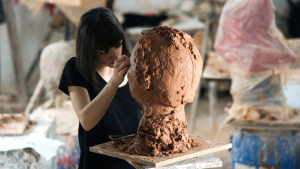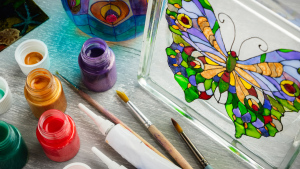
When it comes to art, there are really no rules. With just a bucket of colored pencils, you can create something beautiful using your imagination. These might seem pretty simple, but it takes a lot of practice to master the more complex art techniques.
Learning to paint and sketch is a skill that many of us attempt to master, but few of us ever truly master. Art has a long and rich history, and while learning the basics of art can seem daunting at first, there are some basic to more complicated techniques you should know. The most basic art techniques you should know are, of course, sketching and drawing. Knowing how to draw anything in any shape or size, whether it’s a person, a building, or an intricate scene, is an important skill.
Surrealism
Surrealist art techniques can be mind-boggling, but it’s a useful artistic technique that should be mastered by both beginners and experts alike. This type of art uses subconscious elements in artistic works, taking readers or viewers on an imaginative journey. Surrealist art often plays with the rules of logic, and viewers often don’t realize that what they’re viewing is actually a painting. It is possible to create some truly incredible pieces that have a lasting impact using surrealist art techniques.
Impressionism
Impressionist art, also known as “Impressionism,” was an art movement that sprang out of realism. The movement began in about 1870 in France and lasted through about 1890 when it almost immediately became obsolete. Its central idea was to “produce art that tried to represent what was actually there, rather than what artists wished was there.”
If you’ve ever been to an art museum, you’ve likely been impressed by the quality of the artwork. Artists such as Claude Monet, Edgar Degas, and Camille Pissarro worked to create art that was as close to real-life as possible, and in many works, distorted or cut off parts of the painting to give the illusion of the objects being further away.
Abstract
Abstract art is a new trend that has taken the art world by storm, but what is it exactly? Abstract art is essentially the deciding of what should be depicted on a two-dimensional piece of artwork, like a piece of paper. Instead of showing a realistic depiction of something, like an animal or scene, the artist will instead choose to distort the image.
The abstract art techniques differ, but there’s always a common theme: it’s an artist’s way of breaking down the barriers between reality and imagination. Abstract art involves no representation of recognizable objects, animals, or people but instead uses forms, lines, and colors to create abstract images.
Hyper-Realism
Hyper-realism is generally defined as a style of art that uses visual aids in order to exaggerate the reality of a scene or subject. Hyper-reality art techniques include the use of texture, color, and lighting and are often created on canvas or wood panels. Hyper-realism is a form of art that uses photo manipulation software to create paintings or photographs that appear to have some degree of photographic realism. The techniques required to make hyper-realism photos look real are complex, but the end results are breathtaking.
Realism
Realism painting techniques can be intimidating. It seems complicated at first glance, but once you break it down, it becomes much easier. Most realism painting techniques involve using contrasting values. Understanding what these values are and how to create them is essential for a better understanding of this painting style.
Realism is one of the oldest styles of art, and it’s based on the idea that every object in the real world has a distinct shape and form. In realism art, the artist’s goal is to show as much detail as possible without sacrificing the realistic feel of the image.
Artists, especially painters, have long been curious about ways of creating more interesting art. In the early days, artists followed guilds that taught artists how to paint, or they studied the art of masters, hoping that they’d pick up a few tricks.










